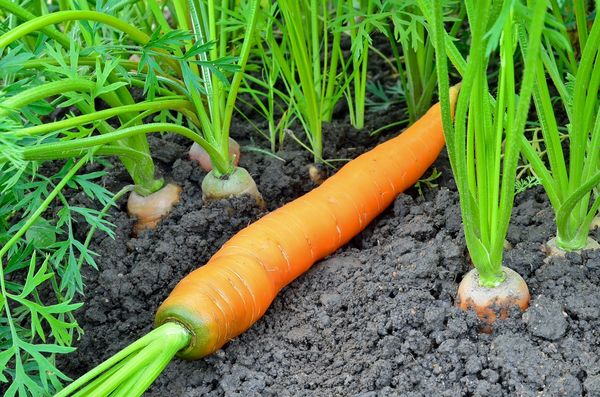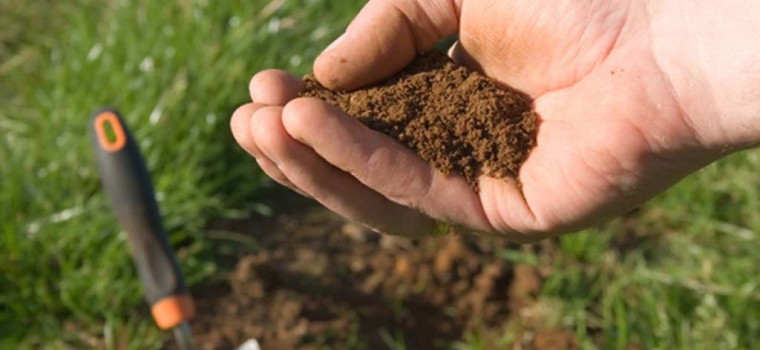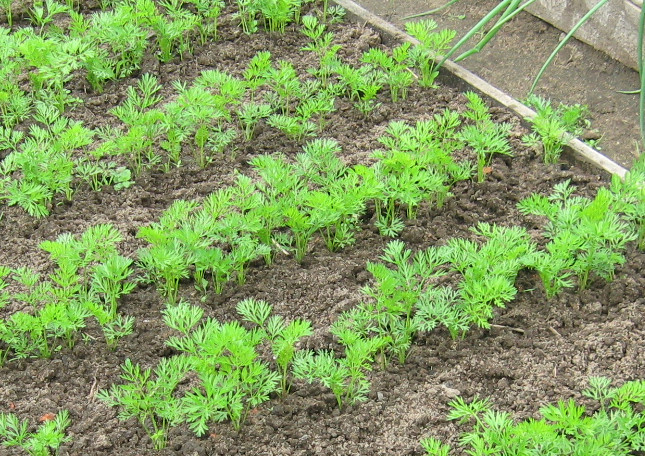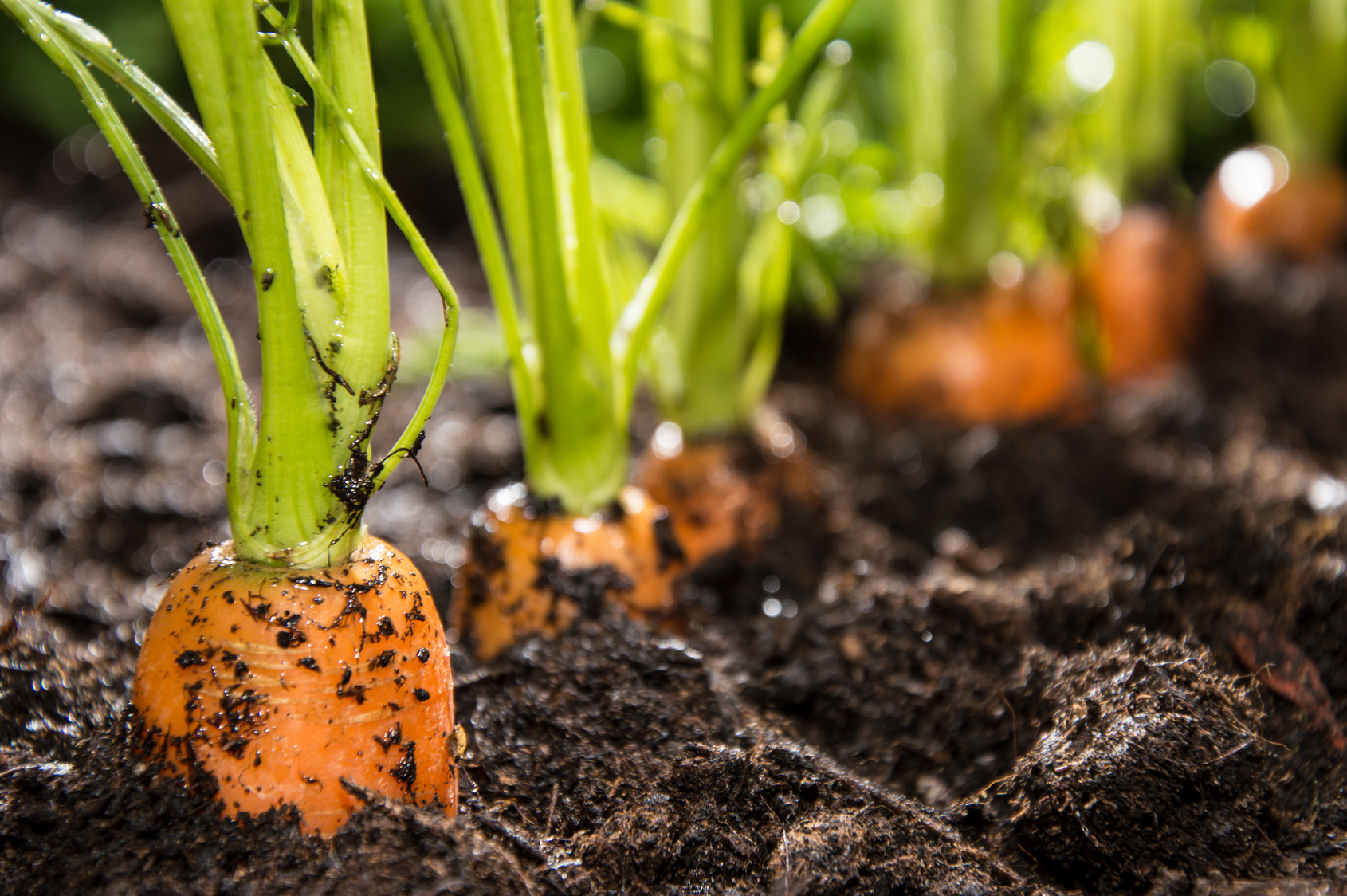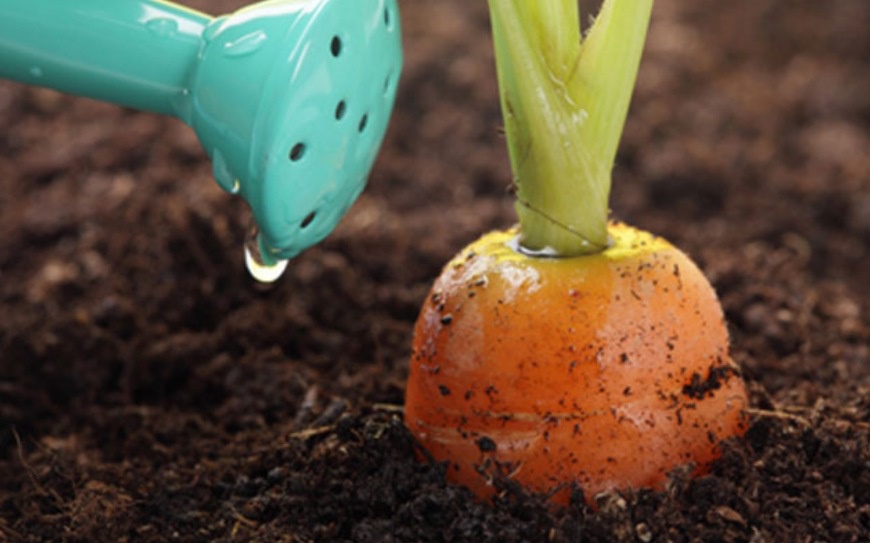On each garden plot, you can make a bed of carrots. Experienced summer residents already know their favorite varieties of this healthy vegetable and the secrets of its cultivation. But for novice gardeners it will be useful to know how to decide on the choice of a carrot variety. What factors determine a good harvest? And how to plant carrots so that they sprout quickly?
Zoning
Soil and climatic conditions greatly affect agriculture in each region. Based on these conditions, breeders conduct trials and find out which carrot varieties are most suitable for each region.
The climate of the Moscow region is characterized by mild snowy winters and not too hot summers with moderate rainfall. Both early and late varieties of carrots will grow well here.
The following varieties are suitable for cultivation in this region:
- their early species: Incomparable, Callisto F1, Nantes 4;
- from medium types: Vitamin 6, Losinoostrovskaya13, Moscow special, Shantane 2461;
- late species: Queen of Autumn;
- for late autumn sowing: Russian giant, Samson, Olympian hybrid.
For the harsh conditions of Siberia and the Urals, mid-season carrot varieties are best suited. It is better not to grow early and late varieties. The early ones will give a small harvest, and the later ones will not have time to gain sugar content and ripen.
The best varieties for this region are Altai shortened, Moscow winter, Shantane 2461, Vitaminnaya 6, Losinoostrovskaya13, Laguna, Bangor, Canada, Zabava, Viking, Darina.
The middle zone of Russia is the best natural complex, with loose fertile soil and a mild humid climate for growing this vegetable. The early varieties are very popular - Tushon, Nandrin F1, mid-ripening - Moscow winter, Nesravnaya, Samson, late-ripening - Canada F1, Flaccoro.
Agrotechnics
Sowing place
Open, sunny. It is good if cucumbers, tomatoes, beans or peas were grown on the selected site before the carrots.
The soil
Medium loamy or sandy loam with neutral reaction (pH - 6-7). The soil for the carrot bed is prepared in the fall. They dig it up, remove the roots of weeds and apply fertilizers (compost, humus, ash). If the soil has an acidic composition, then lime or chalk is added during autumn preparation. By spring, they will evenly saturate the soil layer. If the soil is clay, then a mixture of sand and peat in equal parts is introduced into it.
Seed selection
Many varieties of carrots differ in the shape and color of the fruit, the period of growth and ripening, sugar content, and the duration of storage. How to sow carrots to sprout quickly?
By the time of ripening, carrots are classified:
- Early maturing varieties - up to 90 days from the date of sowing. They are grown to obtain the first vitamins at the end of June, but they are not suitable for canning and winter maturation;
- Mid-season varieties - ripen for more than a hundred days. Suitable for regions with a short period of active plant growth;
- Late varieties are grown in regions with a favorable climate. Ripening period - up to 4-5 months. They are leaders in sugar content, density and shelf life.
Carrot seeds have a coarse, dense shell, so you can wait for seedlings up to 30 days. So that the seeds begin to sprout faster, experienced gardeners soak them before sowing:
- Hot shower for carrot seeds. Place the seeds in a piece of clean material, then fold and tie the material so that the seeds do not fall apart during the procedure. Then keep the package under a hot shower of fifty degrees for no more than a minute. Do such procedures two days in a row three times. After the hot procedure, the bag is left on a plate of water. A little water so that the seeds do not dry out. After the sixth procedure, the seeds swell. They must be taken out of the bag and dried. They are ready to sow;
- "Carrots in a bag" is another popular way to quickly sprout tough carrot seeds. At the very beginning of spring, when the sun begins to bake, and the earth appeared from under the melted snowdrifts, it is necessary to place a bag of carrot seeds in an earthen hole. The depth of the pit is a shovel bayonet. Mark the place so that in 1.5-2 weeks to get seeds that are already beginning to germinate. They are mixed with dry clean sand to sow. Then the bed is harrowed and covered with foil. Carrot shoots will appear in a week. It is necessary to remove the film in time so that the tender sprouts do not stretch out;
- Soaking carrot seeds in vodka softens the rough shell and speeds up the emergence of sprouts. It is enough for stratification to soak a bag of seeds in an alcohol solution for half an hour so that they swell. Next, the planting material is washed with water at room temperature and sown;
- Soaking seeds in preparations for stimulating growth (Krezacin, Emistim, Epin, Agat 25k) significantly accelerates their germination and significantly reduces the interval from sowing to harvesting. Planting material should be soaked just before sowing, following the manufacturer's instructions. After the soaking procedure, the seeds must be dried. Wet seeds clump together and are inconvenient to sow evenly.
Sowing time is spring, summer, autumn.
Spring sowing in warm regions begins in March or April, and in colder ones - at a soil temperature of at least +8 degrees. In spring, when sowing early varieties of carrots, it is important to have time to use soil moisture and seasonal rains so that the seeds have time to germinate. Planting carrots for storage and processing begins in mid-April.
In the south, early or hybrid varieties can be sown in June or July, but additional watering will be required to grow and mature.
Landing
The garden bed is divided based on the following rules:
- row spacing - 20-30 cm;
- groove depth - 2 cm;
- the distance between the seeds is 3 cm.
Sowing grooves are shed with a light manganese solution. After that, the seeds are covered with sand or peat and compacted to ensure good adhesion to the ground. The planting site is again abundantly watered, and then, to accelerate the germination of carrot seeds, cover with foil. The necessary microclimate is created under the shelter, and seedlings appear in 5-7 days.
The seeds of carrots are small, so experienced gardeners use the following sowing methods:
- Sowing with sand. The seeds are mixed with dry clean sand and spread evenly over the entire bed;
- Sowing on the belt. Using paste, carrot seeds are applied to paper tape. The method is laborious, but greatly facilitates the care of carrot shoots;
- Sowing with paste. You can cook the paste and stir the seeds in it. The liquid mixture of seeds and paste is evenly distributed in the furrow. When the seeds germinate, they will not need to be thinned;
- Sowing granular seeds. The stores sell seeds coated with a hard shell of trace elements and growth stimulants. For convenience, the granule is painted in a bright color so that the seed is not lost when it falls. It is very convenient when sowing, especially for such small seeds as carrot, to see the planting pattern.
Top dressing
During the autumn soil preparation, organic fertilizers (compost, humus, ash) are applied for carrot beds.
In the spring, mineral fertilizers rich in potassium and calcium are applied in three stages. The first time - during sowing, the second time - after the first thinning. The third time, late varieties of carrots are fertilized three weeks after the second thinning.
Watering
Carrots will grow large, smooth and sweet if they are regularly watered for the entire period of growth and maturation. The lack of moisture will affect the taste of the carrot. An excess of water will lead to abundant tops growing. Carrots will not be able to form large and smooth fruits. Watering is carried out from the moment of sowing until mid-August, when the roots have already formed, and they will only have to ripen in the garden. Irrigation intensity, depending on precipitation, is 1.5-2 times a week.
Thinning
At a constant daytime temperature of + 15-20 degrees, seedlings appear in two weeks. The first thinning is carried out when a pair of true leaves has formed. Leave 2-3 cm between shoots. The second time the carrots are thinned out in a month, when young root crops have arisen 1.5-2 cm in thickness. 5-6 cm are left between shoots.
A sweet and smooth carrot will not grow in the garden without proper care, hard work and knowledge.
